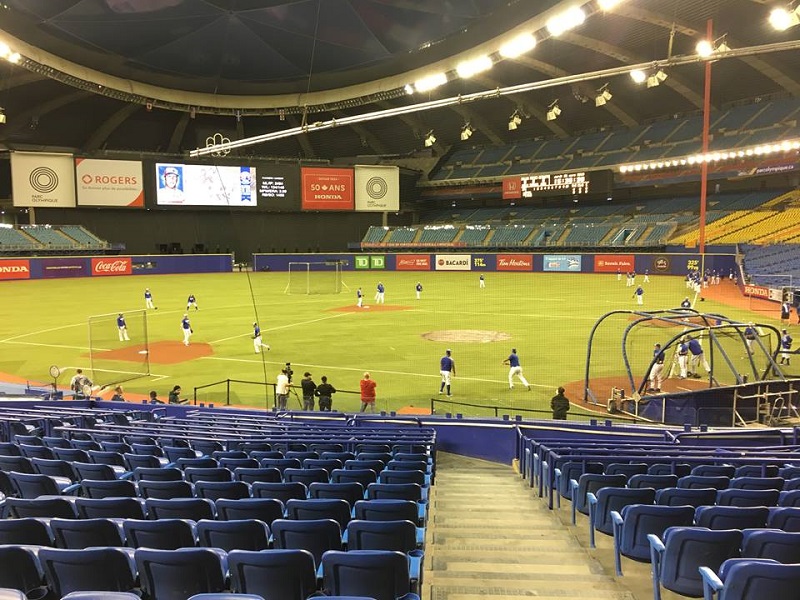Mayor Plante supports a project to bring a team back, but with no public money
As the Toronto Blue Jays concluded their preseason at the Olympic Stadium on March 26, Montreal once again showed why the MLB has a future in Quebec.
The crowd of 22,502 fans witnessed the Blue Jays defeat the Milwaukee Brewers 2-0. The game was a great defensive and pitching battle, and in the bottom of the seventh inning with the bases loaded, second baseman Eric Sogard’s single scored Toronto’s only two runs.
In the grand scheme of the game, the score served only as the backdrop to the ever-increasing interest in professional baseball’s return to the city. While the attendance was relatively low compared to past games, the game was on a Tuesday night, with the Canadiens playing at the Bell Centre at the same time.
Both games in the Olympic Stadium demonstrated Montreal’s love for baseball. During a spectacular opening ceremony that showcased the past, appearances were made by former Expos Javier Vasquez, Quebec-born pitcher Dennis Boucher, all-time Expos wins leader Steve Rogers, and former manager Felipe Alou.
“It’s always great to be back here with former players and teammates and people that I haven’t seen for years,” said Steve Rogers, who pitched for the Expos from 1973 to 1985. “This is the real deal. You can start to translate the interest in Montreal [to] the ability to support a team. It’s really remarkable.”
The ceremony also featured appearances from local amateur baseball organizations. Since the Blue Jays began their annual series at the Olympic stadium in 2014, the MLB has noticed this passion. A group of investors led by businessman Stephen Bronfman has expressed interest in building a new stadium for the team at the Peel Basin.
Mayor Valérie Plante was thrilled to see the games were a success. “People know I’m not the most knowledgeable person about baseball with its scoring and historic players, but I’m passionate about sports, and I understand sports’ role in people’s lives,” said Plante in a press conference during Tuesday’s game.
Plante and the city will support the ongoing project to get a team back to Montreal, so long as it is privately funded. “Now the groups aren’t asking for a cent, so we’re going to support them, as long as Montrealers don’t give money directly,” she added.
With another successful trip, the Blue Jays now move on to the regular season, and baseball fans in Montreal are left wondering; are serious strides going to be made to bringing baseball back to Montreal? Until then, many Montrealers will be cheering for the Blue Jays, and waiting to cheer for their Expos once again.
Main photo by Ben Fraser
